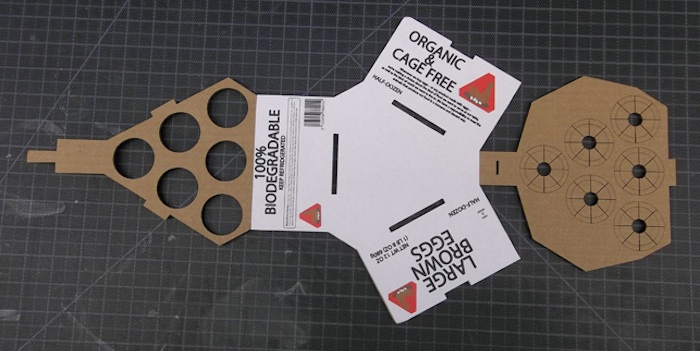Six Brown Eggs
Six Brown Eggs
| School: | University of Bridgeport |
| Team: | Irving Heredia, Jeff Wiiken, Ju Lee, Thomas Hunt, Mackenzie Day |
While assessing conventional egg cartons, we have found four major problems, protecting the eggs from breaking, poorly recyclable materials, having to open the carton to check for broken eggs, and fitting a fragile, long, and awkward carton of eggs into a bag of groceries safely.
Our triangular package packs flat, is cut from a single sheet of cardboard, and is completely recyclable and biodegradable, stemming from the use of recycled cardboard and soy based ink. It is folded together without the use of any fasteners and adhesives allowing for both easier manufacturing and disposal. Also because this design packs flat, for every single traditionally shipped egg carton, ten of ours may be can shipped. Our triangular package can sit on any side without worry of the package opening or falling over. Within the triangular package there are 6 friction fitting areas to hold the eggs tight, which makes for easier carrying and stacking in stores and during transit. The form is more structurally sound than the traditional carton, as it provides a barrier on all sides of the eggs.
Due to the unique shape the packages can be stored horizontally and stacked on top of each other or vertically, in a space saving manner, and arranged in a row. The ability to stack vertically allows the consumer to more easily store their eggs, meaning eggs no longer need to be the last item placed in the bag at the grocery store. This package also taps into our habits. Due to the open top and edges, consumers no longer need to open a carton to check for damaged eggs, it utilizes the convenience of a plastic package and the simplicity of a traditional carton.
The materials and aesthetic support a simpler life style, one in which we take care of ourselves, the environment and the animals who provide food for us. It is time that our products made life easy.

